Story by Peter Darnall
We all know that Nuvolari won the 1935 German Grand Prix. What most of us didn’t know is that Tazio did it with a two speeed gearbox! Peter Darnall explains…
The Grosser Preis von Deutschland of 1935 was more than a motor race. The Nürburgring would be the setting for the German Grand Prix, the richest and most prestigious event of 1935 on the European racing calendar. Nationalistic fervor ran high as the Nazi government subsidized Silver Arrows faced off against a mixed field; the stage was set for a German victory on their home ground.
The starting grid included five Mercedes Benz and four Auto Union racers, which were decked out in silver livery. Scuderia Ferrari entered three Tipo B Alfa Romeos (also known as P3s) to be driven by Tazio Nuvolari, Louis Chiron, and Antonio Brivio.
To the surprise of the Nazi faithful, Tazio Nuvolari, pushing his Alfa to the limit, had equaled Bernd Rosemeyer’s time in the Auto Union during a practice session. But the German motoring press wasn’t worried: the antique Italian Alfas were no match for Nazi technology, the pundits scoffed. And Nuvolari was almost forty-three years old while their “Blonde Bernd” Rosemeyer was only twenty-five and at the top of his form.
Dark storm clouds hung low over the Eifel Mountains. Morning rain showers left a wet surface as the cars were rolled onto the starting grid. Tazio Nuvolari summoned the Scuderia executive director Nello Ugolini and, pointing to an Italian flag amid a display of swastika banners, he said,” Nello, please have that Italian flag changed because it is worn out. Today I am going to win!”
Was this pre-race prediction simply bravado or a figment of some journalist’s imagination? What did Nuvolari know? Did he even say such a thing?
Lorenzo Montagner believes Nuvolari said exactly that. Lorenzo Montagner is both the curator of Tazio Nuvolari Museum in Mantua, Italy and an acknowledged authority on Nuvolari’s extraordinary career. Montagner cites as his source the record of a round table discussion held at the Leonardo da Vinci National Museum of Science and Technology in Milan on October 17, 1992.
Tazio Nuvolari would have known the strengths and weaknesses of the Tipo B Alfas as well as anyone. Although the Alfas had scored some successes against the Germans in previous races, the power advantage of the Mercedes and Auto Union racers was simply overwhelming. No amount of virtuoso driving over the daunting circuit could close that horsepower gap . . . unless it was raining.
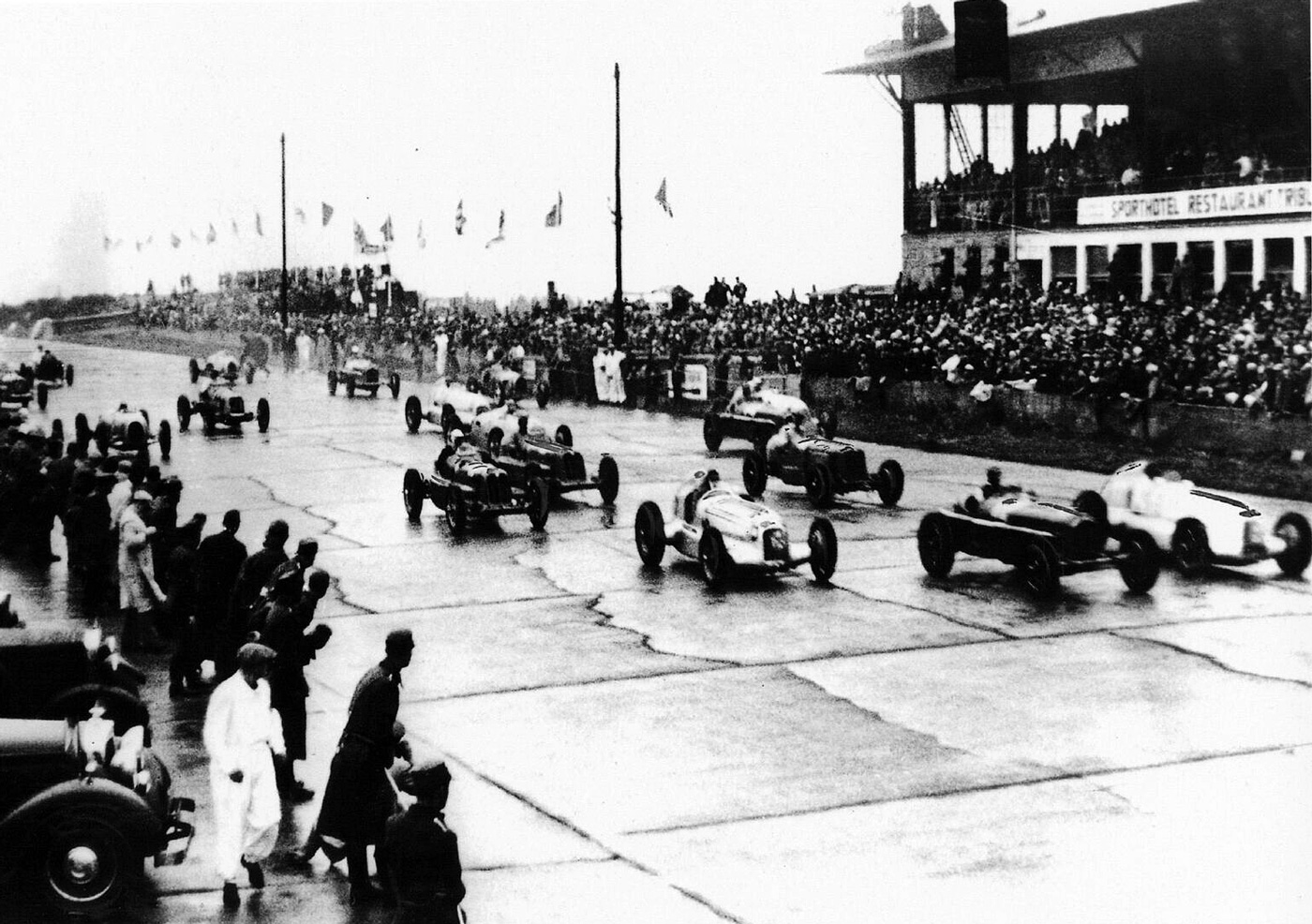
And it was raining before the start of the German Grand Prix. Photo Courtesy of the Jon Shirley Collection
The story of Scuderia Ferrari’s direct involvement with the Tipo B Alfa Romeos began more than two years before the German Grand Prix. Alfa Romeo had withdrawn from active participation in motor racing and, in late June of 1933, a convoy of trucks stopped in front of a modest establishment on Viale Trento e Trieste, the home of Scuderia Ferrari in Modena. The trucks carried six of the formidable Alfa Romeo Tipo B race cars and a wealth of spare parts.
There was more: Luigi Bazzi had left Alfa Romeo, where he was the head of the experimental department under Vittorio Jano, and he would now join the Scuderia. Attilio Marinoni, the chief test driver at Alfa, was also involved and would assume similar responsibilities at the Scuderia. Although Enzo Ferrari had maintained a close relationship with the Alfa Romeo factory for years, the fortuitous acquisition of the P3 Alfas had transformed Scuderia Ferrari into a major player on the international motor racing scene. The Scuderia took full advantage of the windfall with wins at the Coppa Acerbo and both the Italian and the Spanish Grands Prix.
The 1934 racing season, however, marked a change in the Scuderia’s fortunes. Although the Tipo B Alfas complied with the newly mandated 750-kilogram rule, they were no match for the more powerful Mercedes Benz and Auto Union rivals which had been specifically designed to meet the new criteria.
The Alfa Romeo factory built seven new Tipo B machines for the 1934 race season. These cars incorporated the required wider cockpit configuration and were equipped with the latest 2.9-liter engines. The serial numbers on these second generation P3s received an additional digit and were numbered sequentially from Number 50001. The Scuderia continually experimented with upgrades attempting to keep the Alfas competitive: Dubonnet-type independent front suspensions, hydraulic brakes, and reversed quarter-elliptical rear springs were fitted. Engine size was increased to 3.2 liters, producing about 285 horsepower on methanol fuel. But the increased power came at a price: the 4-speed gearbox could not cope with the additional torque. Scuderia mechanics dubbed it the “Ponte di Bassano,” sardonically referencing a bridge which had been endlessly bombed and repaired in the Great War.
The fix for the overstressed gearbox was to remove a gear and to use the internal space gained to enlarge and strengthen the remaining gears. The 4-speed gearbox thus became a three-speed unit. The quest for increased horsepower and performance threatened the reliability of Jano’s original design. By modern standards, the handling characteristics of the Tipo B Alfa Romeos might be characterized as erratic; some might call it dangerous. With a dry weight a bit over 1500 pounds and a power output of about 285 horsepower the Tipo B Alfa Romeo is a potent machine indeed.
To put The Tipo B in perspective, I interviewed Erickson Shirley and Peter Giddings, both of whom campaign Tipo B Alfas in vintage racing events today. I also spoke at length with Fred Russell, the curator of Jon Shirley’s extensive automobile collection, who added both an insider’s view of the Tipo B Alfa and an overview of the racing scene of the 1930s.
Jon Shirley owns Tipo B Chassis Number 50005. This Alfa is part of his automotive collection and, as the five-digit number indicates, this is one of the “second generation” Tipo B Alfas built by the factory in 1934. According to the collection’s curator, Fred Russell, this Alfa retains the modifications made by Scuderia Ferrari and represents the configuration of Nuvolari’s car at the Nürburgring.
Jon Shirley has recently turned over the race driving chores to his son, Erickson. Erickson, who came up through the ranks of motorcycle racing, had an interesting comment. He noted that drivers of that early era preferred to be thrown clear of the car in a crash. “Before starting a race,” he remarked, “I remind myself that this car is dangerous. There is no fuel cell, no roll bar. . . nothing. I don’t want to get off the road at speed. . . ever.”
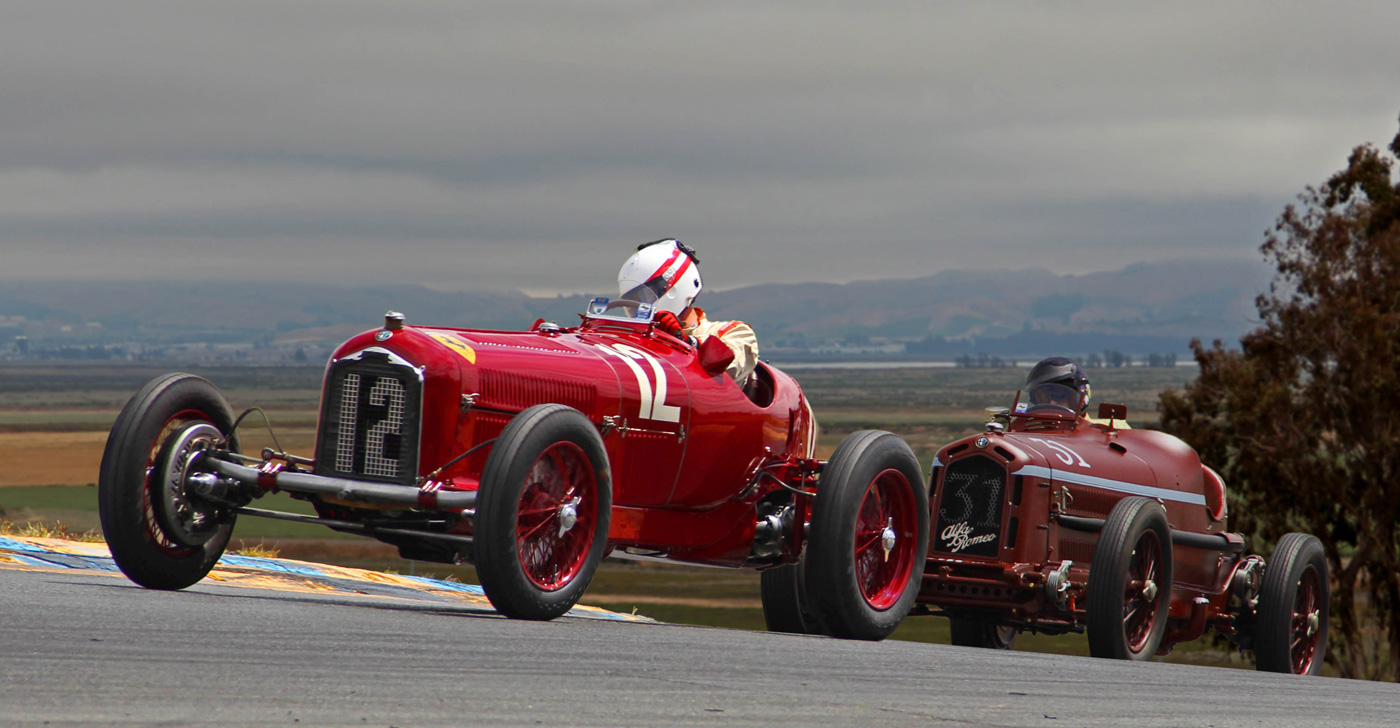
Alfa vs. Alfa – Erickson Shirley P3 leads Peter Giddings’ Alfa Monza at Sonoma Historics 2017. Peter Darnall photo
The first time Erickson drove the Alfa in the rain was at Goodwood. He remembered being concerned before the start but came away from the event with an interesting observation: “Skinny tires on wet pavement were the limiting factor with that much power. . . I got my best times driving the course in top gear.”
Erickson regards himself as the custodian of a valuable piece of history. He quipped, “I don’t want to be that guy who becomes famous on TV for crashing and destroying a great car!” He regarded his outing in the wet at Goodwood as a humbling experience. Under those conditions he could envision the extraordinary skills and the bravery of the men who pushed these cars to the limit. “I became a real fan of Tazio Nuvolari that day,” he reflected.
Peter Giddings owns and actively campaigns his Tipo B in vintage racing events. His car is Chassis Number 5006. This Tipo B, as noted on his website, “is the sole surviving first series Tipo B, retaining its original (subsequently factory widened) slim sided body and half elliptic rear suspension (currently converted to quarter reversed elliptics), which is still being raced in historic events today.”
“My car originally had a four-speed gear box,” Peter stated, “but it has been converted to a three-speed configuration plus a reverse gear.” The four-speed unit, which was originally fitted to the 8C 2300 sports cars, was troublesome, and while he enjoyed the challenge of shifting the four-speed gearbox, he noted that lap times with the three-speed gearbox were about the same.
“The Nürburgring is largely a series of medium and fast sweeping bends,” Peter commented. “Using only the top gears, Nuvolari could have pushed the Alfa to the absolute limit without excessive shifting and unduly stressing the gearbox. It’s worth noting, that both Chiron and Brivio retired early with gearbox related problems.”
The Tipo B is a powerful car; few have experienced it at high speed. Peter had the opportunity recently during a vintage racing event on the Indianapolis Motor Speedway. “When I ran #5006 at Indy (thus replicating previous “P3″ runs at this iconic track), my red line was surpassed at over 140 mph, the technique being a very loose grip on the steering wheel, and let the car find its own way! ‘Don’t know about you, Peter, but afterwards we all had to change our pants,’ said my pit crew.”
Fred Russell, in his position as curator of the Shirley collection, is intimately familiar with the Tipo B. “The transmission is a real concern on this Alfa,” he stated, producing a document from Dennison International Motors, the group which maintains and services the unit. This report confirms that the Alfa “has a three-speed cluster gear” and that “by omitting one of the 4 speed gears this allowed them to make the remaining gears physically wider and a little stronger.” Once the car is moving, Fred explained, you only use the top two gears, making this essentially a two-speed unit.
Fred added another element to the mix: He observed that tire technology had not kept pace with the rapid increase in power and the higher speeds obtainable under the 750 Kilogram Rule. While rapid tread wear and tire degradation were problems for the Silver Arrows, the lower-powered Alfas would have been less affected by these concerns. Nuvolari would certainly have been aware of this issue, Russell reasoned, and would have known that if the track were to dry out during the race, which was predicted, the favored German machines might become vulnerable.
Regarding the engine: “Citing the actual horsepower of Nuvolari’s Alfa would be only conjecture,” Fred noted. “There were a lot of stories that the Alfa had a larger unit than 3.2 liter engine in it for Germany, but analysis says you could not bore out the 3.2 liter any further or fit a larger engine in the chassis.” He confirmed the engine in this Alfa is the same configuration that Nuvolari would have used at the Nürburgring.
Erickson Shirley said it best: “Anyone who could push this car to the limit would be a brave man—there’s no safety net here!”
Tazio Nuvolari may well have shared his confidence with Nello Ugolini, as Lorenzo Montagner asserts. Nuvolari would have been aware of the gearbox and tire issues. The wet track would tend to offset the German’s horsepower advantage.
Left unsaid, however, was the element of raw courage . . .
Nuvolari knew that he would have to drive the entire race on the ragged edge of control and that the formidable Nürburgring would leave no room for error. The diminutive Italian had spotted the Germans a hundred-plus horsepower and was about to challenge them on their home turf. In the rain, the road would be wet and treacherous with deadly patches of spilled oil. Advantage Nuvolari!
The huge crowd at the Nürburgring were on their feet cheering as Nuvolari would roar by, careering through the rain slickened corners in a series of lurid slides, the Alfa trailing bits of shrubbery snagged from hedgerows lining much of the circuit. He was in his element now, bouncing up and down in the narrow cockpit, pounding his fist on the side of the car, urging the Alfa to go ever faster. On the last lap, on a drying track, he simply drove the tires off the leading Mercedes and went on to win the race of a lifetime.
The ‘Sieg Heil’ boys had a lot of explaining to do that night.
Unlike many of his contemporaries, Nuvolari died of natural causes. Some claimed he wanted to die behind the wheel of a race car, but this wish was to be denied. Nine months after suffering a paralyzing stroke, he died on August 11, 1953. The Museo Tazio Nuvolari in Mantua, Italy, is a museum dedicated to the great Italian driver. Among the artifacts on display is the winner’s trophy celebrating Tazio Nuvolari’s victory in the German Grand Prix.
Now that was a motor race!
For more information:
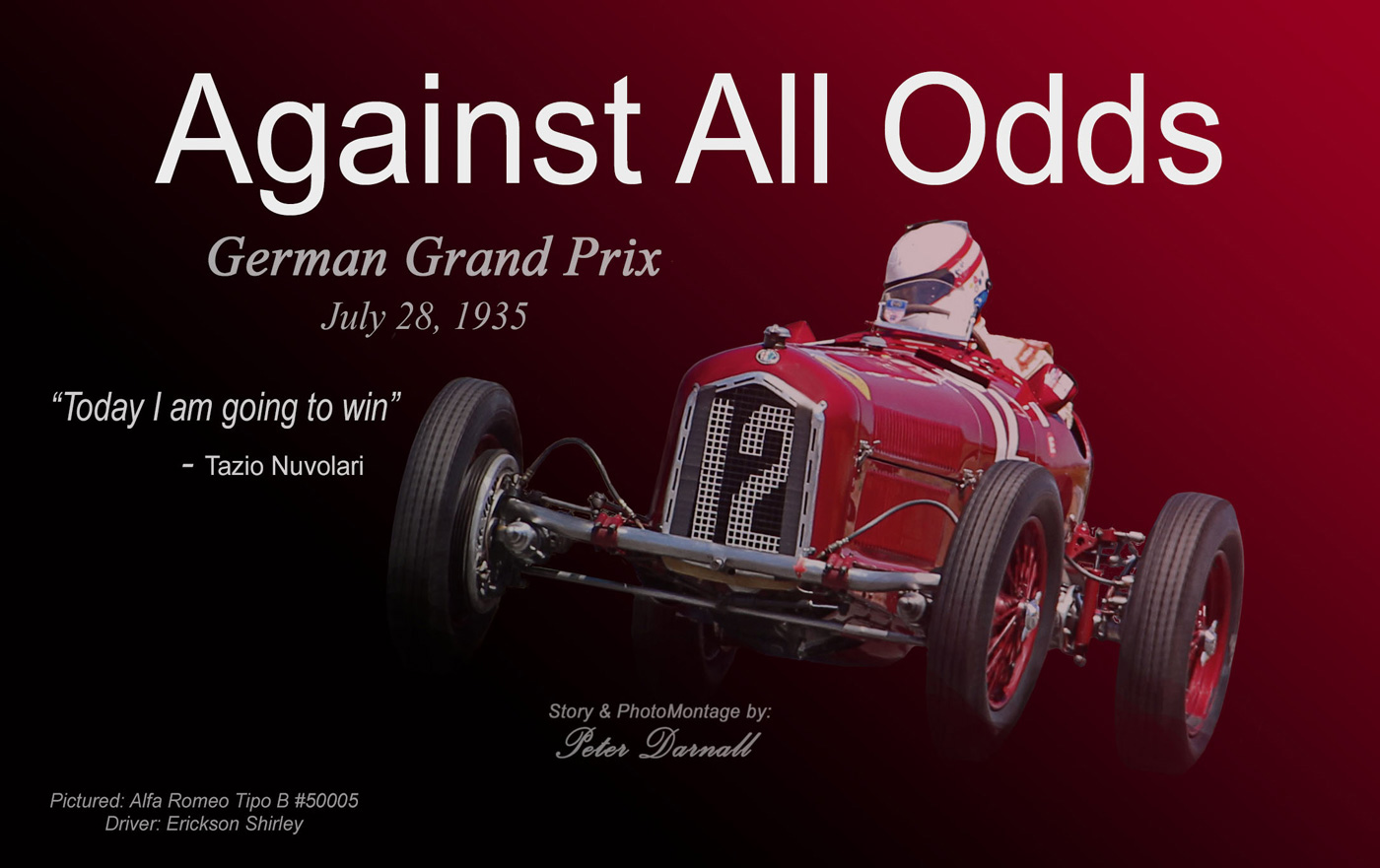
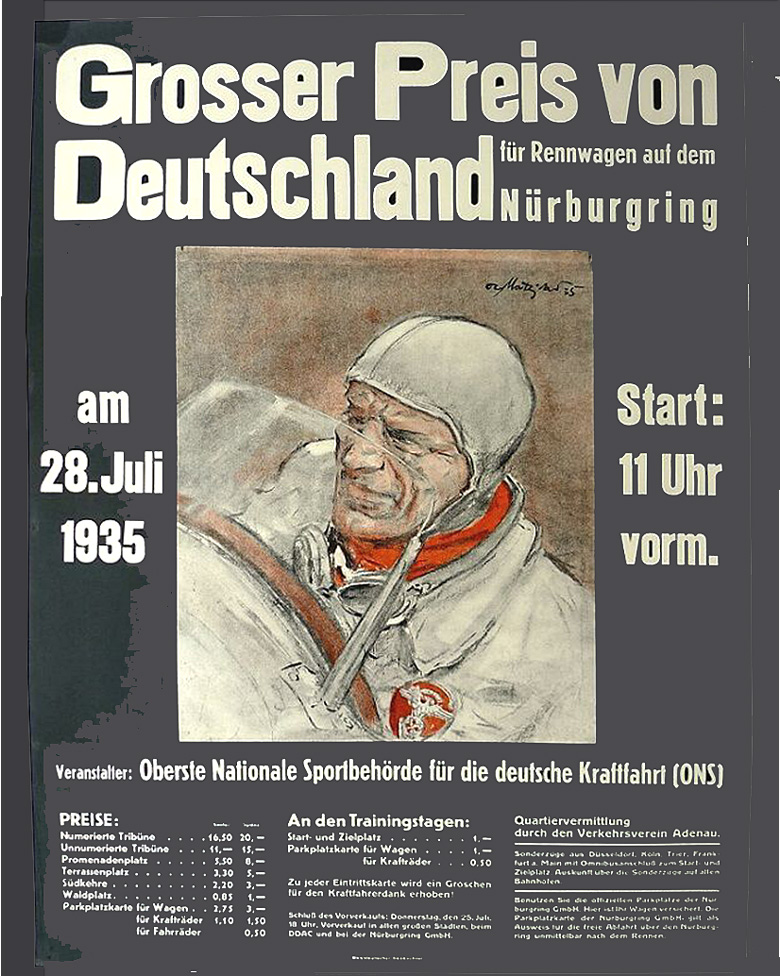
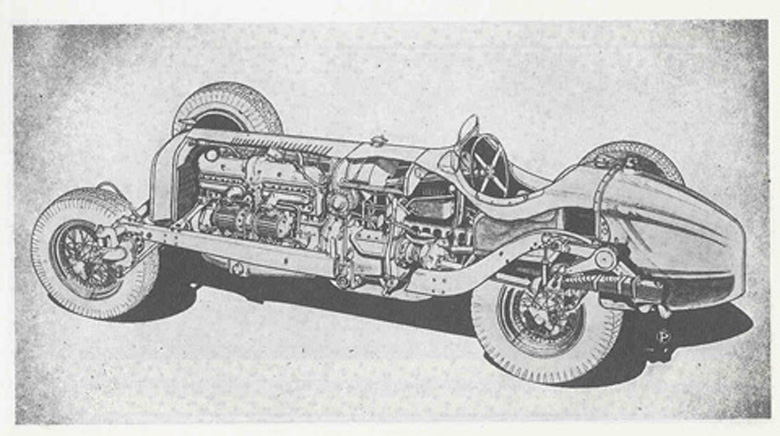
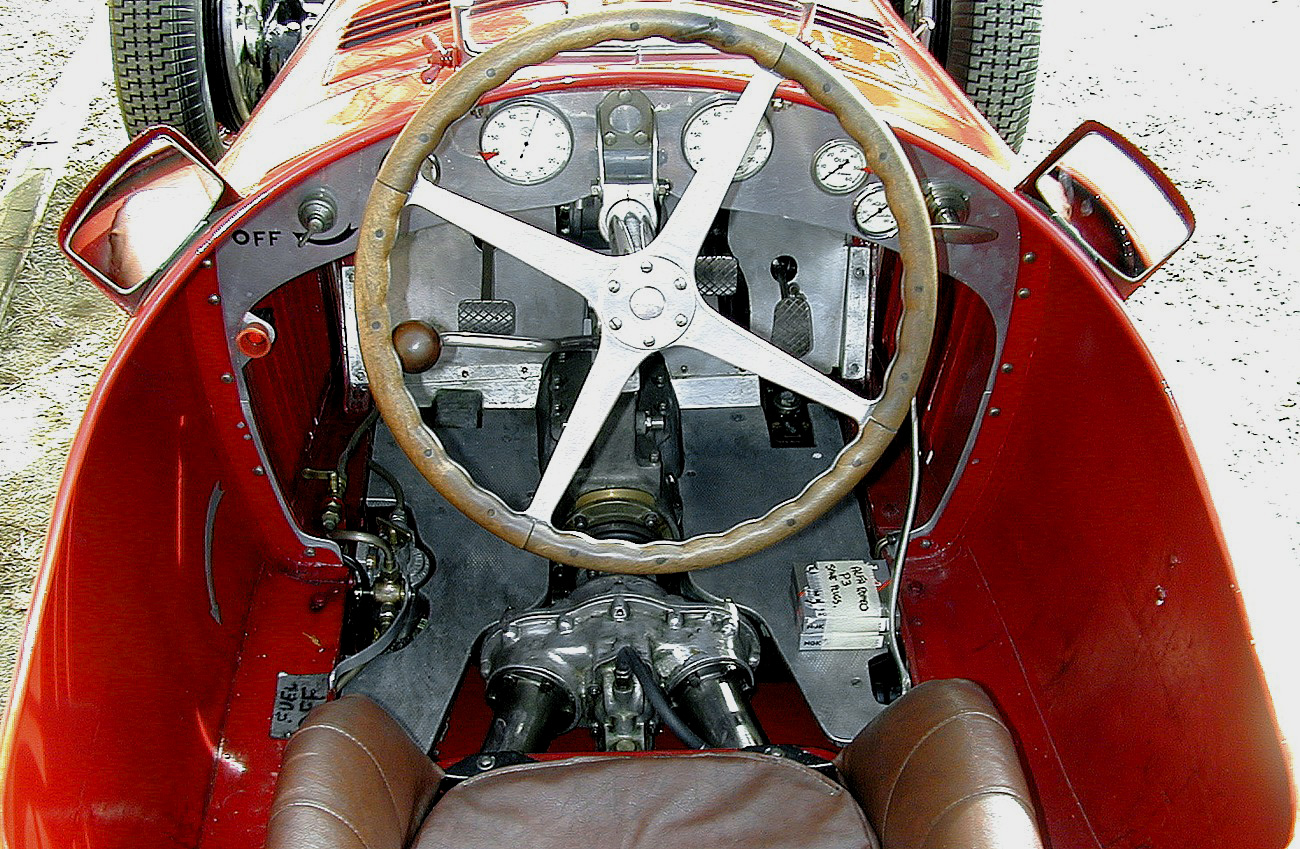
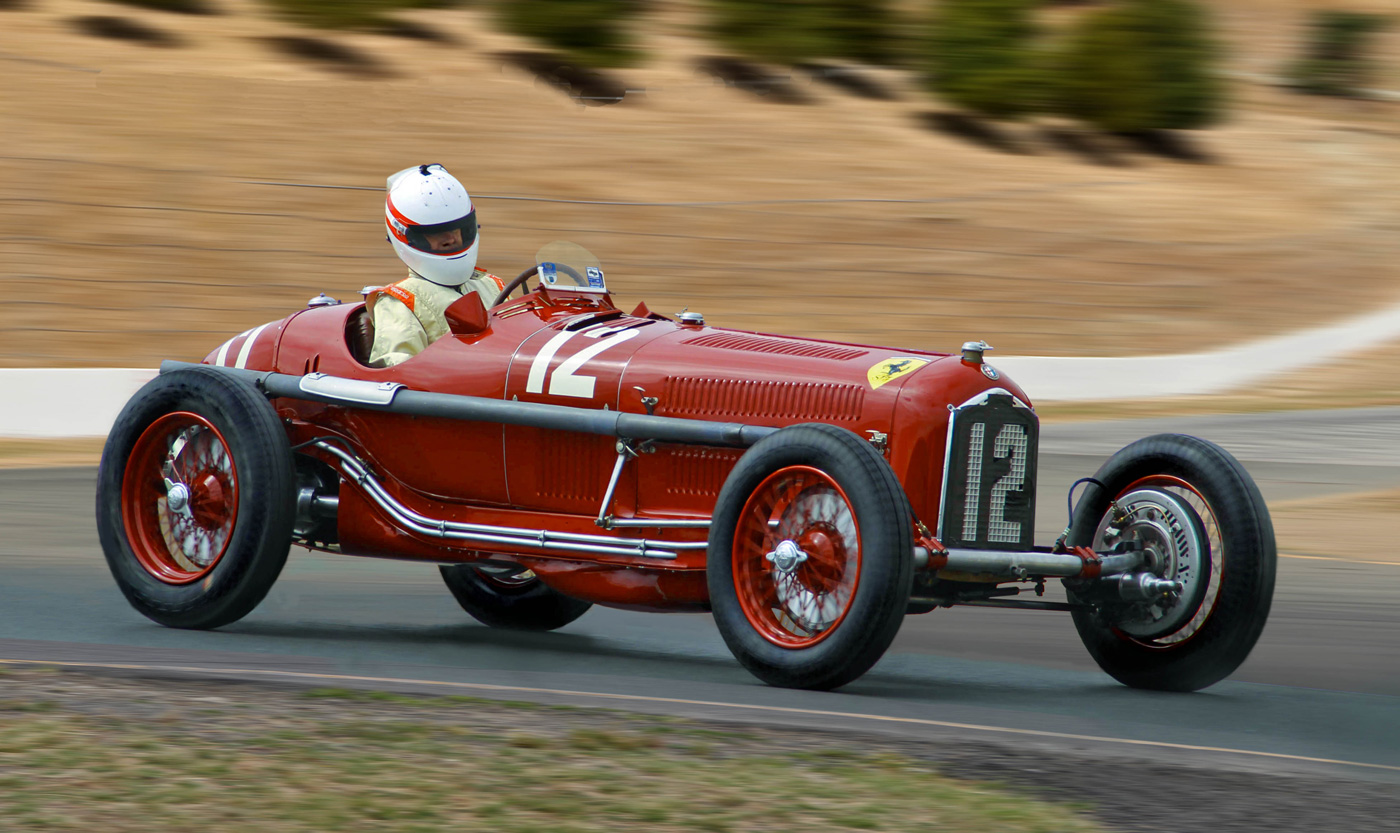
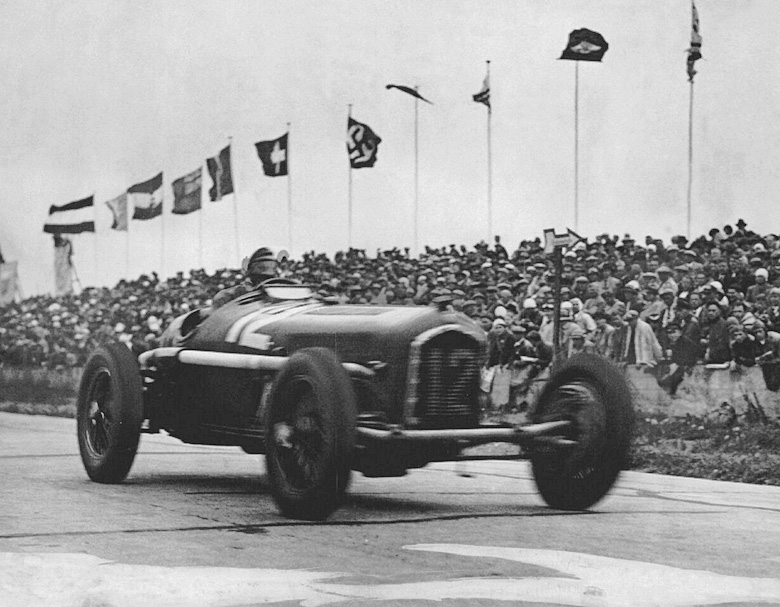
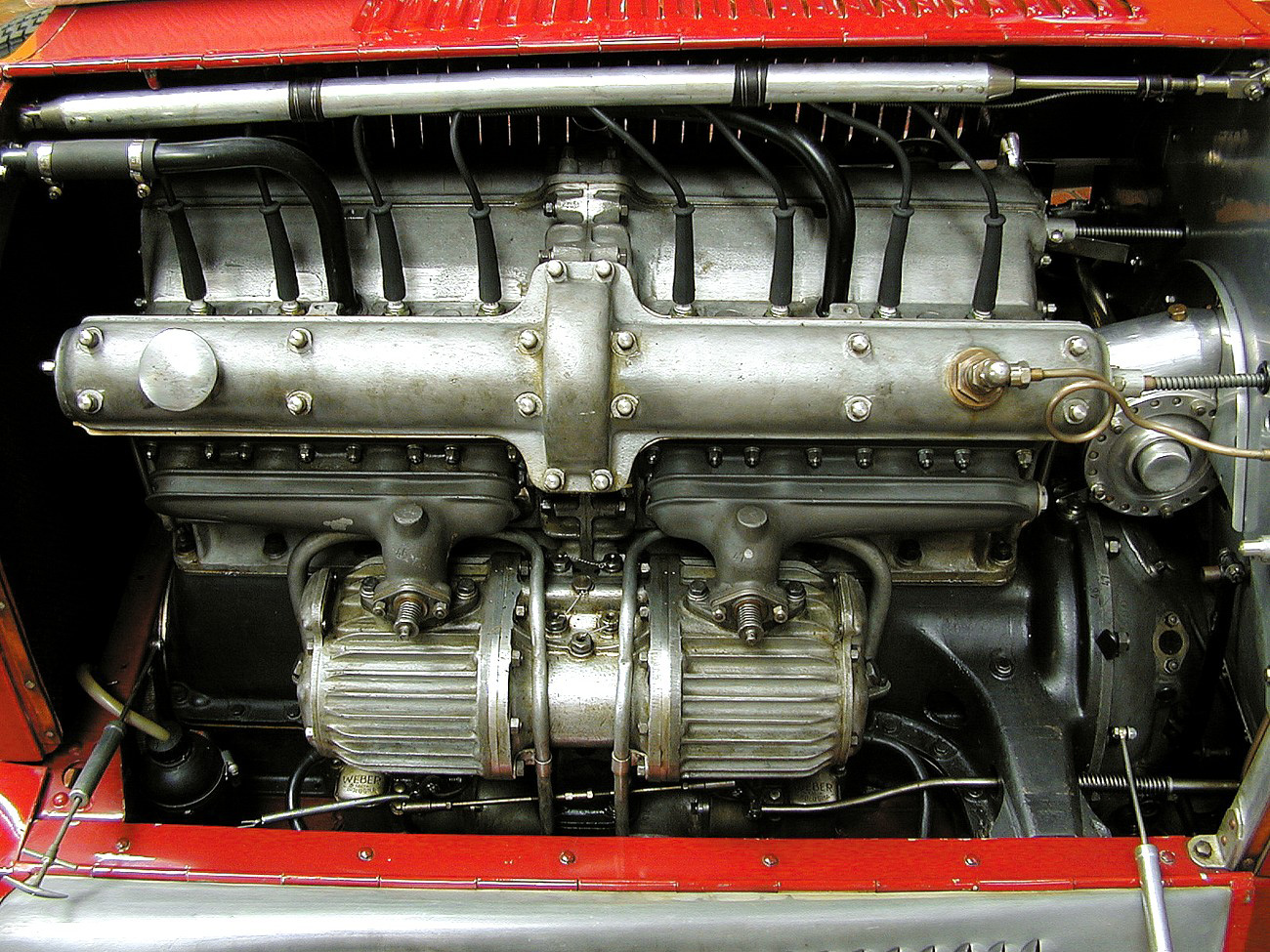
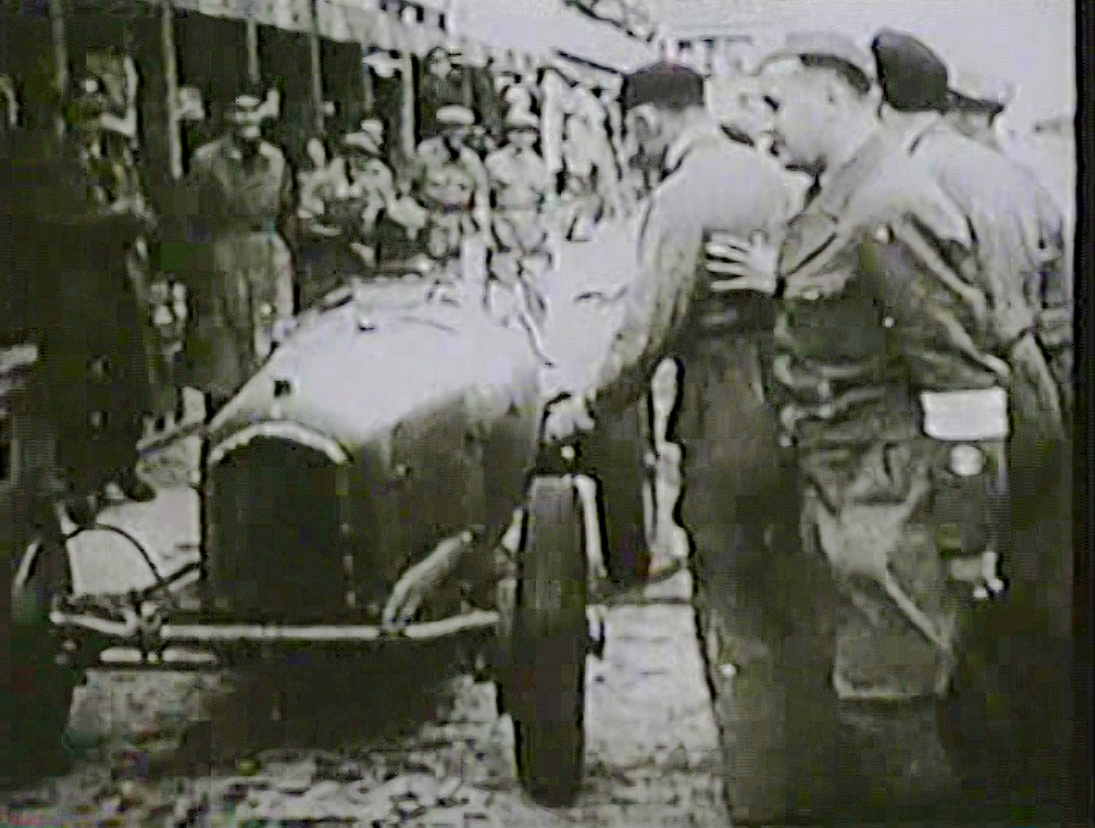
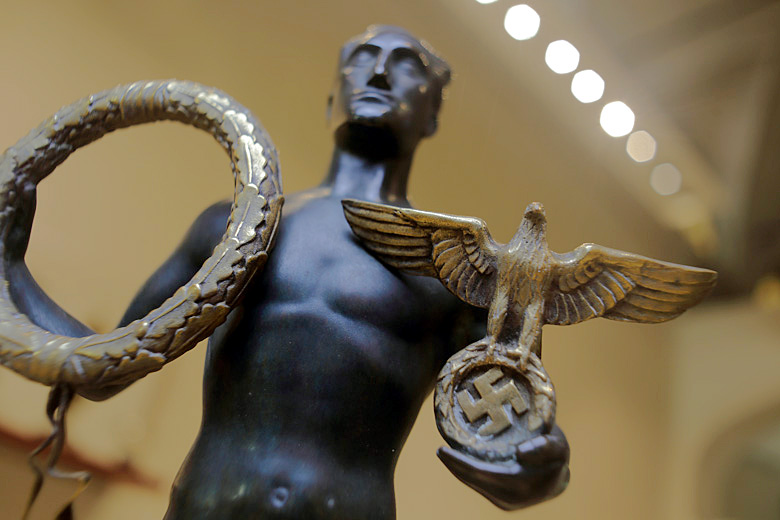
Interested in the comment about previous runs of the P3 at Indy.
Can you clarify this reference ?
Thanks,
This made me cry. Or at least my eyes got damp. I remember my father telling me this story with relish.
To Eric Green- you are not the only one. I remember reading about that race in Ken Purdy’s “Kings of the Road” as an eleven year old, and it got me right in the heart as well.
What a great piece of racing history. I was riding in a model A Ford back then and a Chrysler 34 Airflo. It was a tough time back then. Auto racing wasn’t mentioned back then in my world.
Despite the old saw re the German government subsidizing the Mercedes and Auto Unions, historians who have checked the books say that less than 10% of those companies’ racing budgets came from the government.